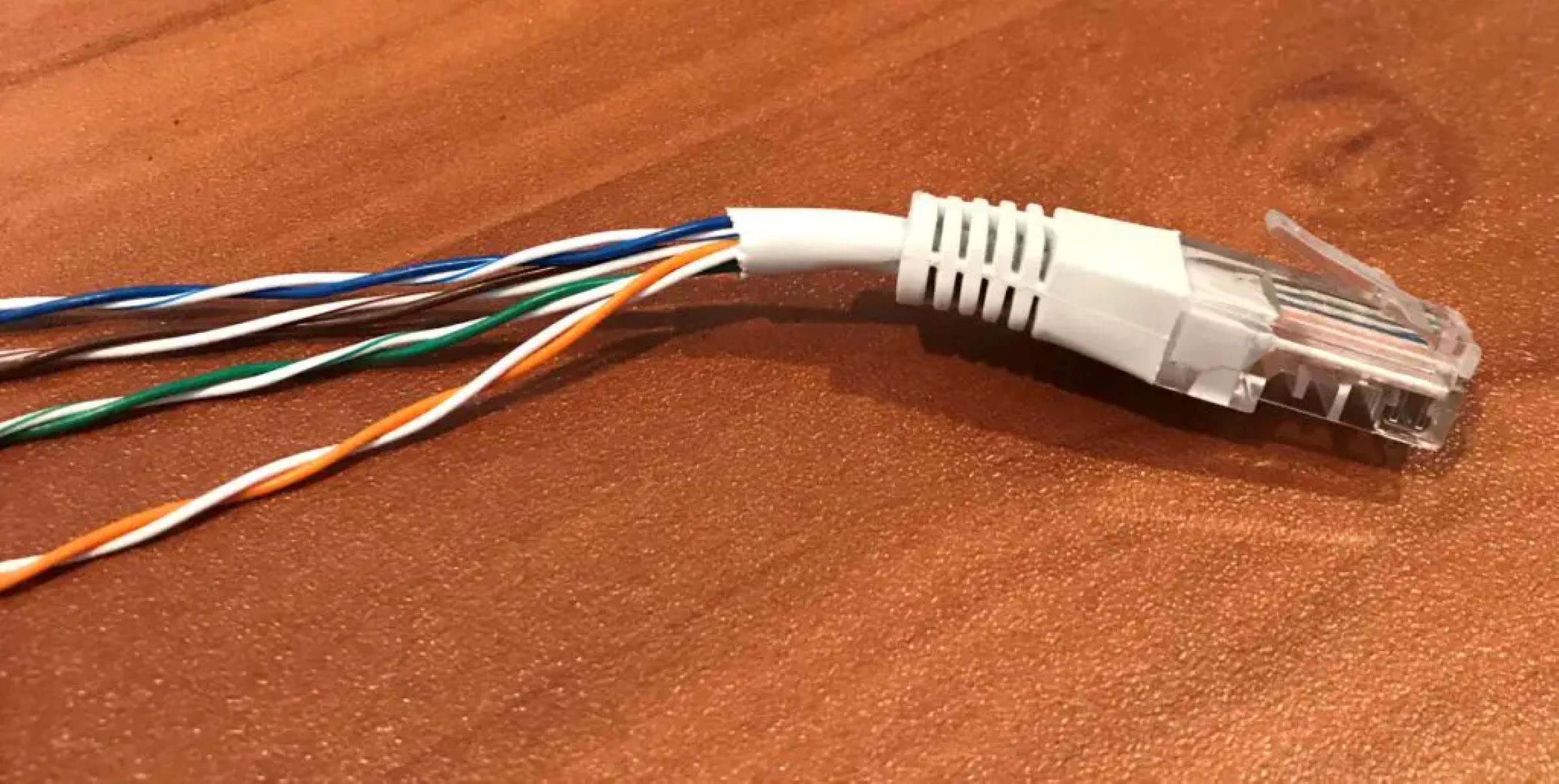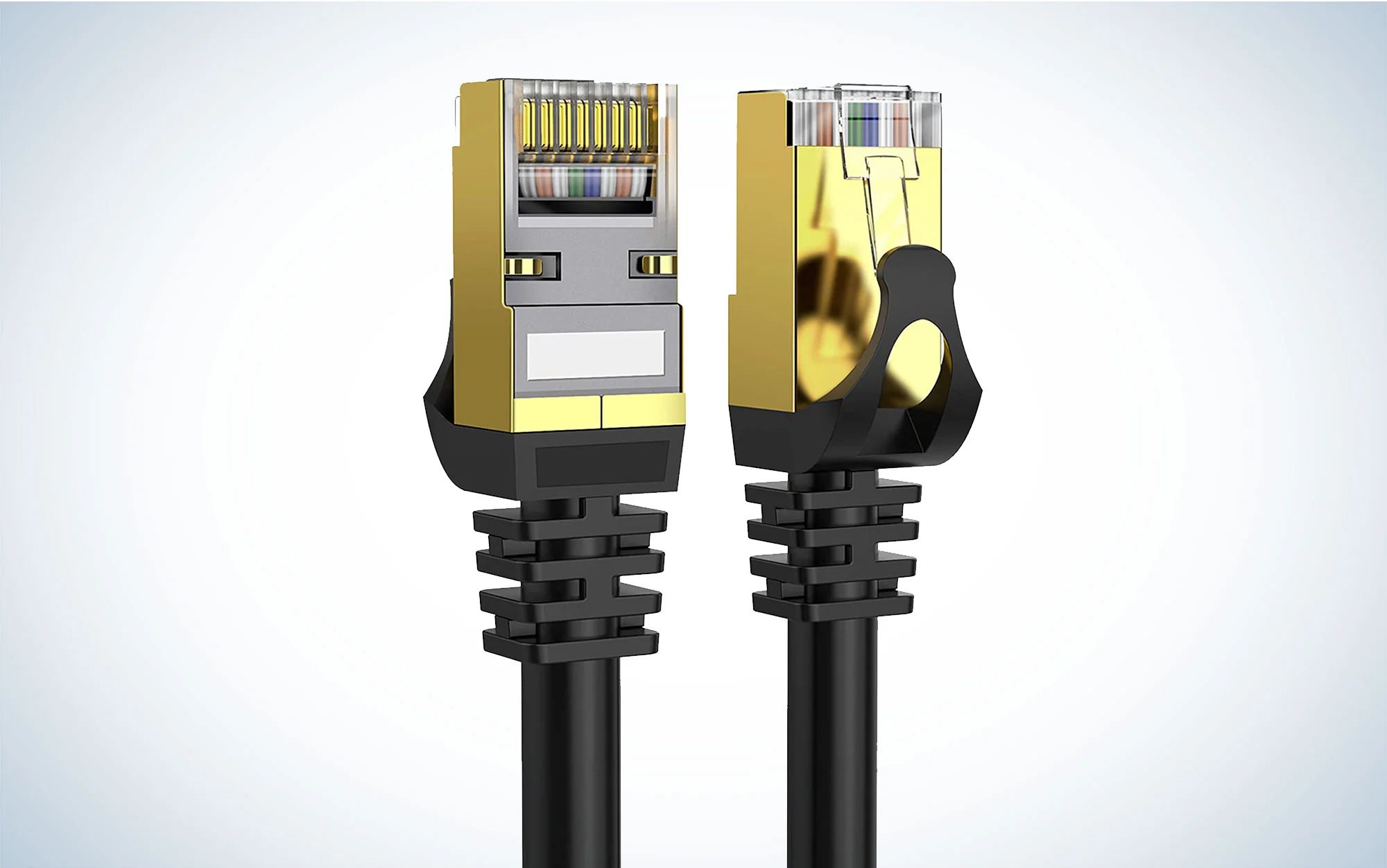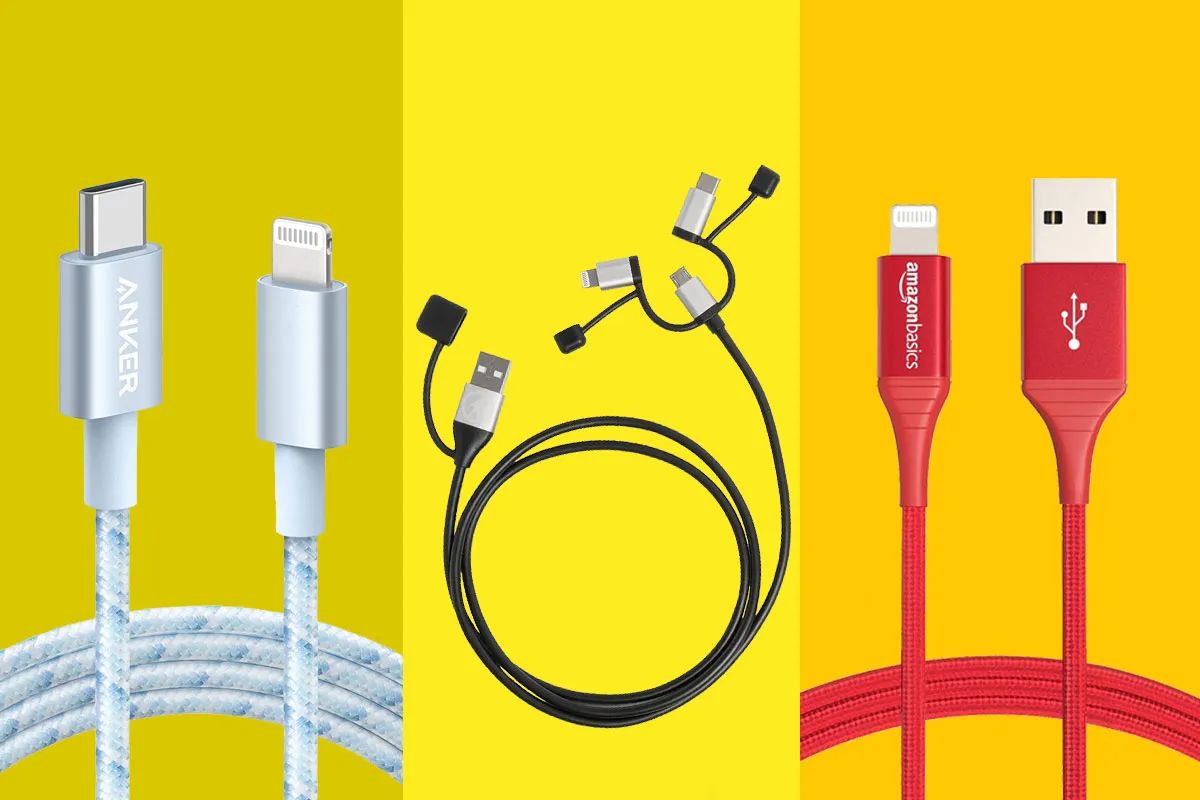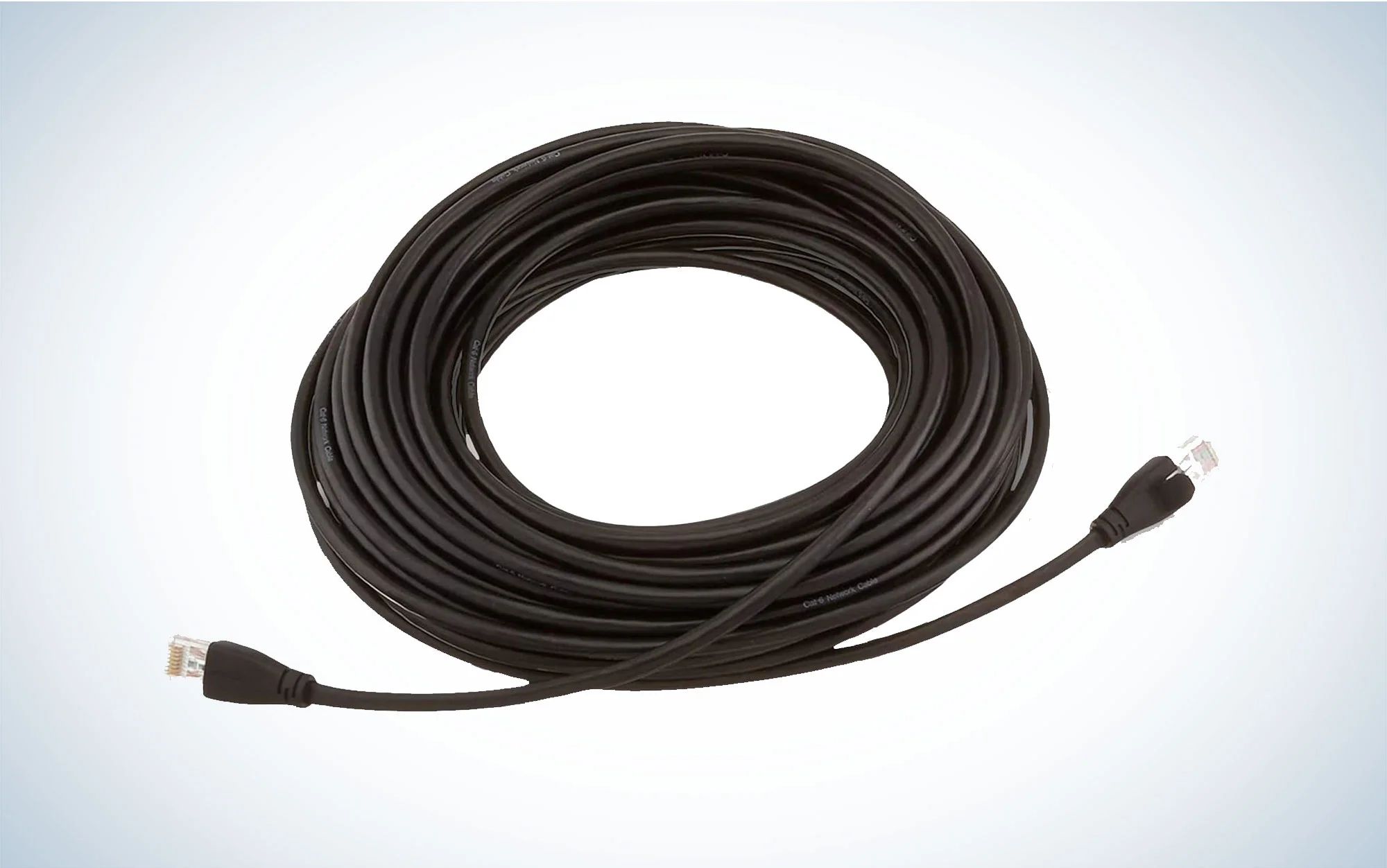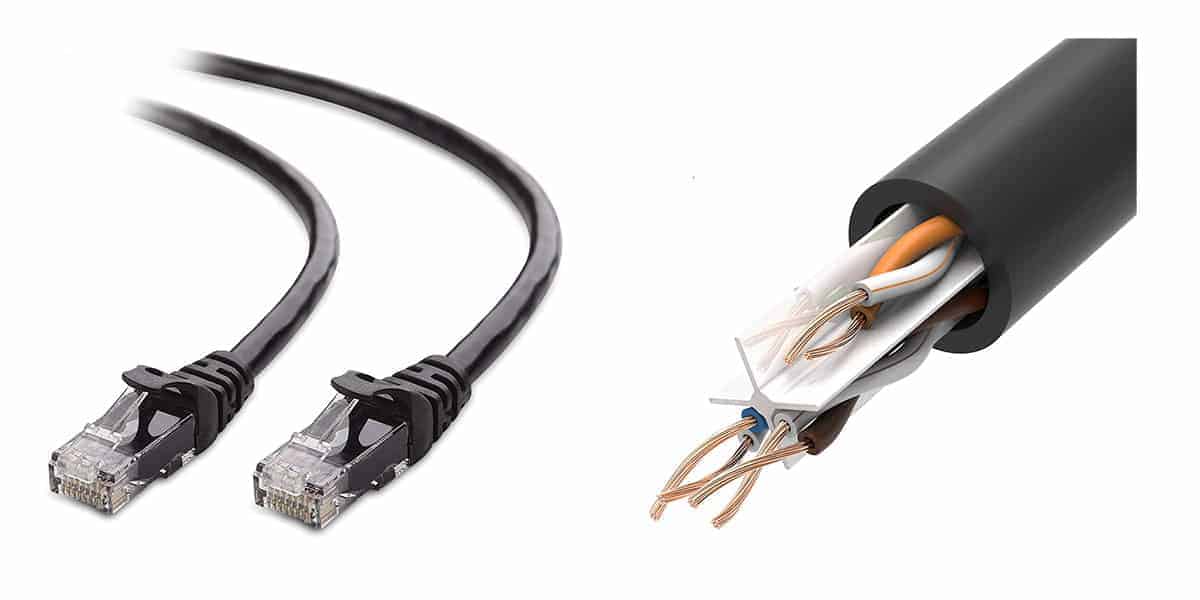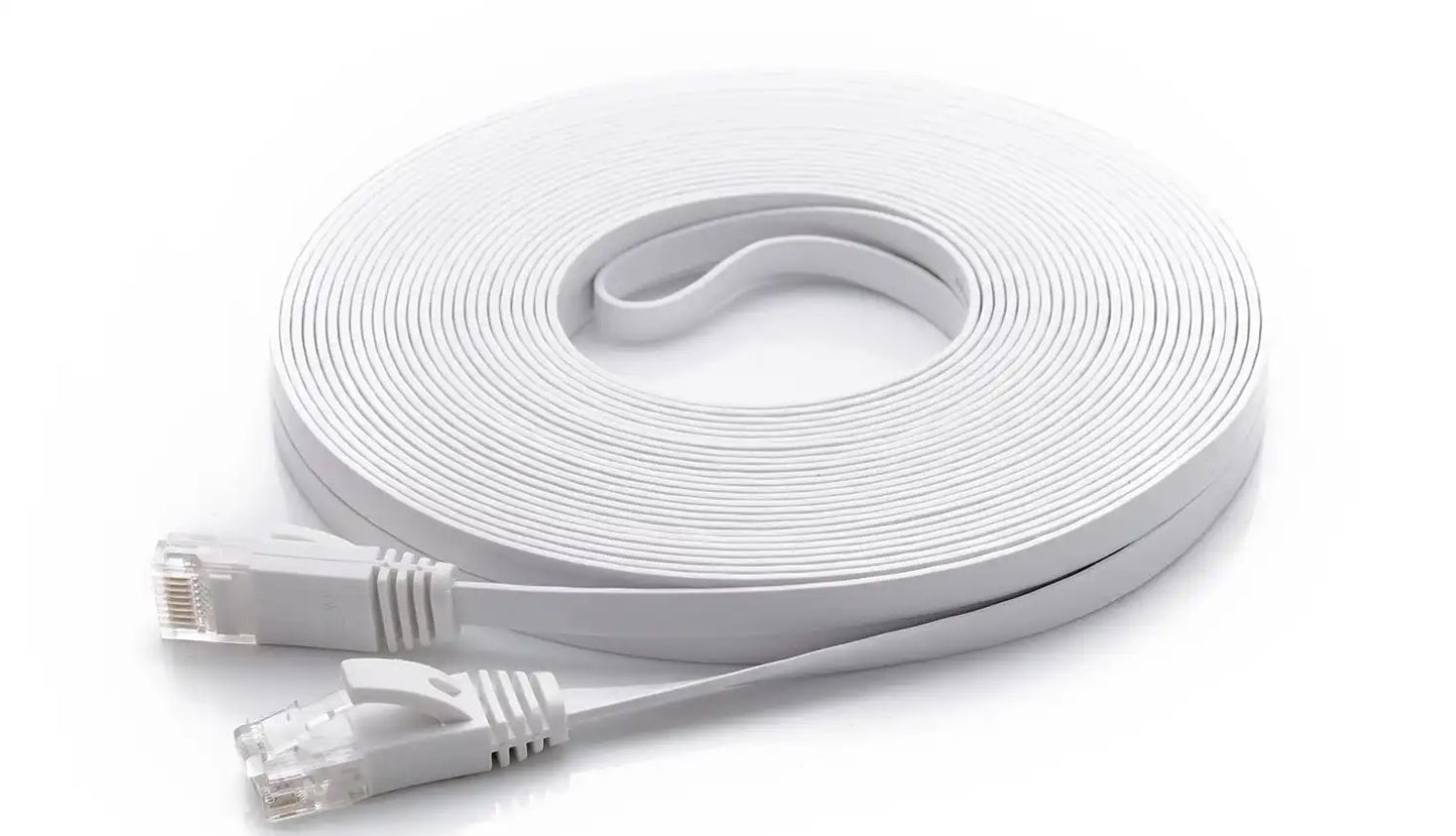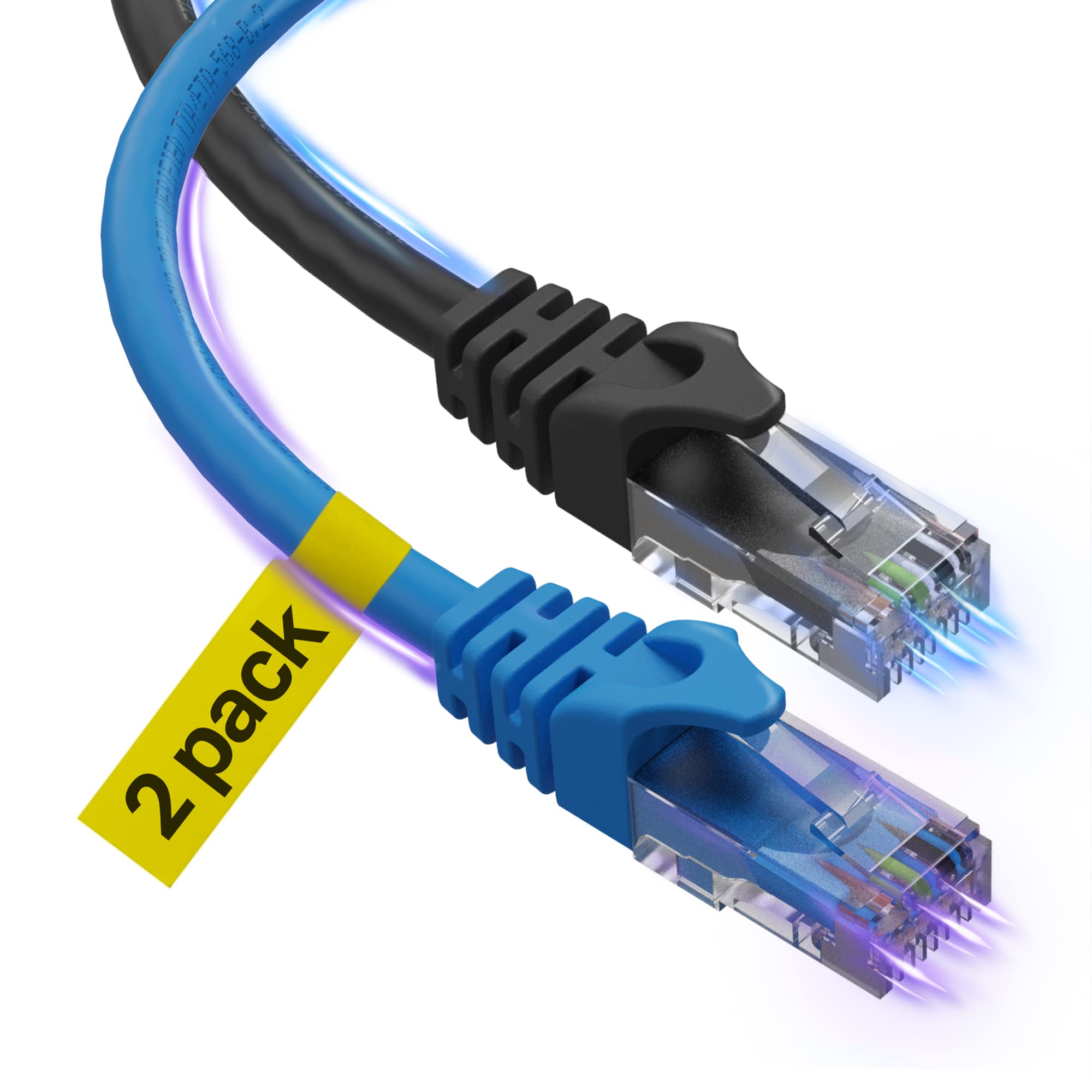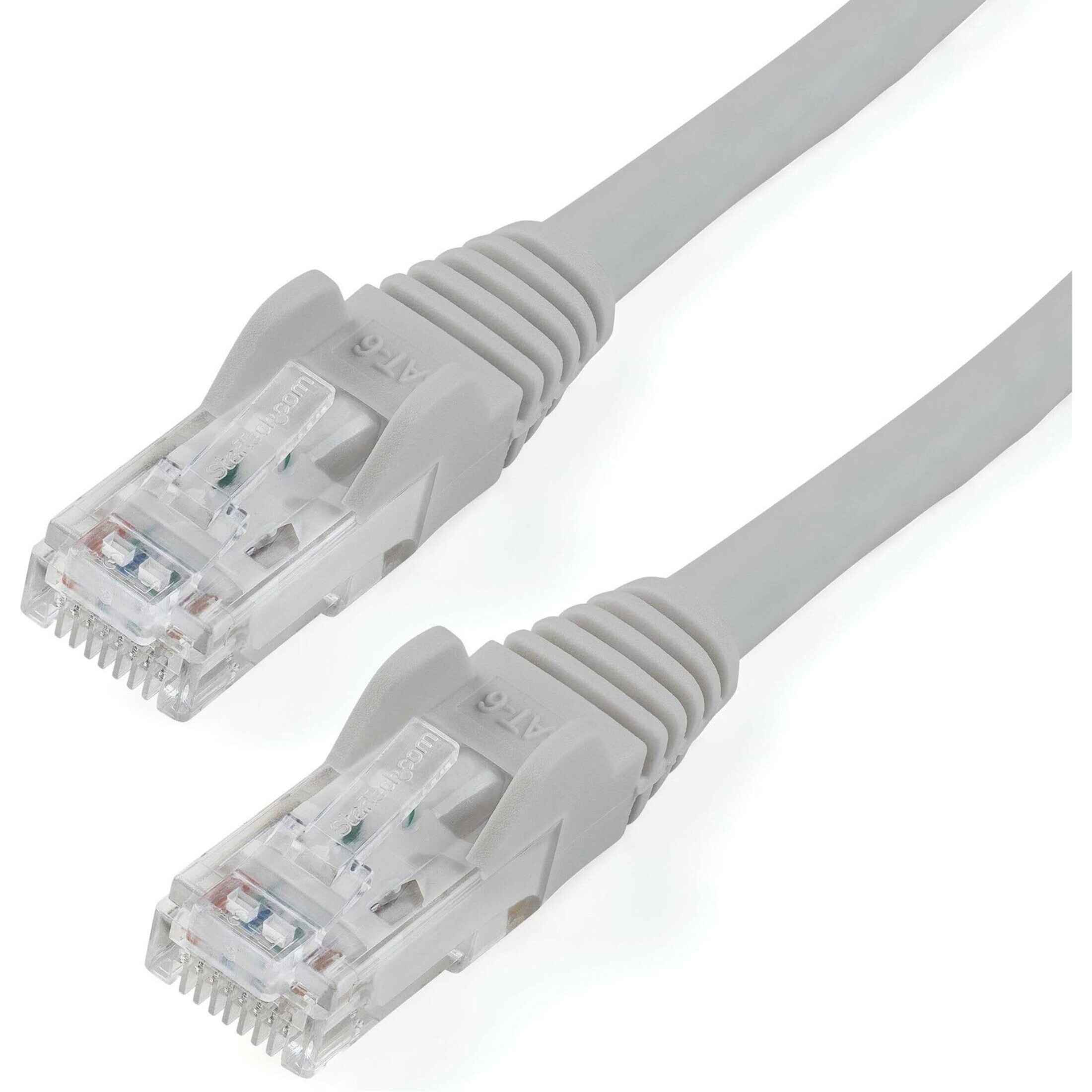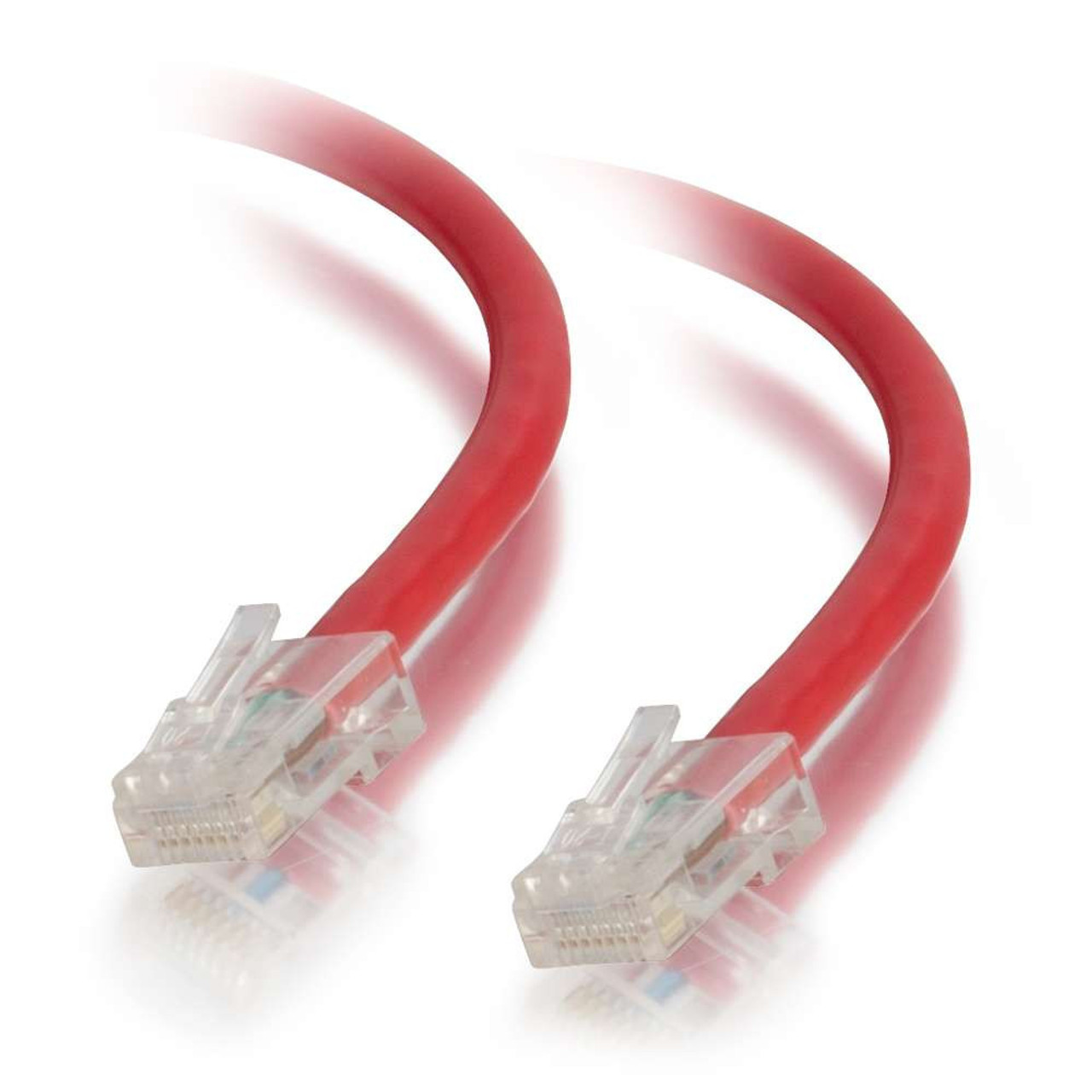Introduction
Ethernet cables are an essential component of our modern computer networks, providing reliable and high-speed connectivity. They are commonly used in homes, offices, and data centers to connect devices to the internet, facilitate file sharing, and support various network applications.
But have you ever wondered how long these Ethernet cables can actually last? It’s an important question to consider, especially if you want to ensure the longevity and efficiency of your network. While there is no definitive lifespan for Ethernet cables, there are several factors that can affect their durability.
In this article, we will explore the factors that influence the lifespan of Ethernet cables, discuss the common signs of cable deterioration, and provide tips for proper care and maintenance. Whether you are a home user or a network administrator, understanding these factors can help you make informed decisions when it comes to replacing or upgrading your Ethernet cables.
So, if you’re ready to dive into the world of Ethernet cables and discover how to maximize their lifespan, let’s get started!
Factors Affecting the Lifespan of Ethernet Cables
The lifespan of Ethernet cables can vary depending on a variety of factors. Understanding these factors is crucial in determining how long your Ethernet cables will last and when it’s time to replace them. Let’s take a closer look at the key factors that can affect the lifespan of Ethernet cables:
1. Quality of Materials: The quality of the materials used in the manufacturing of Ethernet cables plays a significant role in their durability. Cables made with high-quality copper conductors and robust insulation are more likely to withstand wear and tear, bending, and environmental factors compared to cables made with cheaper materials.
2. Cable Length: The length of the Ethernet cable can impact its lifespan. Longer cables have a higher risk of signal loss and interference, which can degrade the performance over time. If possible, opt for the shortest cable length necessary for your network setup.
3. Usage Frequency and Environment: The frequency of use and the environment in which Ethernet cables are installed can have a significant impact on their lifespan. Cables that are frequently plugged and unplugged or exposed to harsh conditions like extreme temperatures, moisture, or physical stress are more prone to damage and deterioration.
4. Types of Ethernet Cables: Different types of Ethernet cables have varying lifespans. For example, Cat5e cables are more durable and can handle higher data transfer rates compared to the older Cat5 cables. Newer standards like Cat6 and Cat6a offer even better performance and longevity.
5. Installation and Maintenance: Proper installation and regular maintenance can significantly extend the lifespan of Ethernet cables. Using cable management solutions, avoiding sharp bends, securing cables properly, and periodically inspecting for any signs of damage or wear can help prevent premature deterioration.
6. External Factors: Several external factors can impact the lifespan of Ethernet cables, such as electrical interference, nearby power cables, electromagnetic radiation, and even pests. It’s important to consider these factors when choosing the location for cable installation.
By understanding these factors and taking appropriate measures to mitigate their impact, you can ensure that your Ethernet cables last as long as possible and provide optimal performance for your network.
Quality of Materials
When it comes to the lifespan of Ethernet cables, the quality of materials used in their construction is a critical factor. High-quality materials can contribute to the cables’ durability and performance, ensuring they last for many years. Let’s explore the importance of material quality in Ethernet cables:
Copper Conductors: The conductors inside Ethernet cables are typically made of copper due to its excellent conductivity. The quality of the copper used can vary, with higher quality copper offering better performance and longevity. Cables made with pure copper conductors are more durable and less prone to signal loss or degradation compared to those made with copper-clad aluminum (CCA).
Insulation and Sheathing: The insulation and sheathing materials used in Ethernet cables provide protection and insulation for the conductors. High-quality insulation materials, such as polyethylene or fluorinated ethylene propylene (FEP), offer better resistance to heat, moisture, and environmental factors. Likewise, durable sheathing materials like polyvinyl chloride (PVC) or thermoplastic elastomer (TPE) can provide additional protection from physical stress and wear and tear.
Connectors and Contacts: The connectors and contacts of Ethernet cables, such as the RJ45 connectors, also have an impact on the overall quality and durability. High-quality connectors with gold-plated contacts are more resistant to corrosion and can provide better connectivity over time. They also ensure a snug and secure fit when plugging and unplugging the cables, reducing the likelihood of damage to the connectors or ports.
Compliance with Standards: Ethernet cables that adhere to industry standards, such as the ANSI/TIA-568.2-D or ISO/IEC 11801 specifications, are more likely to have been manufactured with higher quality materials and processes. These standards ensure that the cables meet performance requirements and have undergone testing to ensure reliability and durability.
Investing in high-quality Ethernet cables may have a higher upfront cost, but it can be worthwhile in the long run. Cables made with superior materials are more resistant to wear and tear, environmental factors, and signal loss, resulting in a longer lifespan and better performance.
When purchasing Ethernet cables, look for reputable manufacturers or brands known for their quality products. Reading customer reviews and checking for certifications can also help ensure you are getting cables made with high-quality materials.
Remember, the quality of materials used in Ethernet cables can significantly impact their durability and performance. By choosing cables made with superior copper conductors, insulation materials, and connectors, you can ensure that your Ethernet cables last longer and provide a reliable network connection.
Cable Length
The length of an Ethernet cable has a significant impact on its lifespan and performance. While longer cables may be necessary to connect devices in different locations, it’s important to consider the potential drawbacks and limitations that come with increased cable length. Let’s delve into the relationship between cable length and the lifespan of Ethernet cables:
Signal Loss and Interference: As an Ethernet signal travels through a cable, it undergoes attenuation, or signal loss. Longer cables are more prone to signal loss, which can lead to degraded performance and slower data transfer rates. Additionally, longer cables are more susceptible to electromagnetic interference (EMI) and radio frequency interference (RFI) from nearby electrical sources, leading to potential data errors or connection issues.
Delay and Latency: Longer cable lengths can contribute to increased delay and latency in network connections. This delay, known as latency, arises from the additional time it takes for the signal to travel back and forth along the longer cable. In applications where low latency is critical, such as online gaming or real-time video streaming, shorter cables can make a noticeable difference in performance.
Potential Physical Stress: Longer cables have a larger physical footprint, making them more susceptible to tangling, kinks, and strain. Improper cable installation or excessive bending can result in damage to the internal wires, insulation, or connectors, shortening the cable’s lifespan.
To maximize the lifespan of Ethernet cables, it is advisable to use the shortest cable length required for your network setup. Consider the distance between devices and the location of network equipment when determining cable lengths.
When running cables, use cable management solutions like clips or cable ties to keep the cables organized and minimize stress. Avoid tight bends or sharp angles that can strain the cable, and ensure cables are not pulled or tugged during use.
If you require longer cable lengths, consider using Ethernet extenders or network switches to extend your network without relying solely on a single, lengthy cable. By breaking up the network connection into smaller segments, you can maintain better signal integrity and reduce the strain on individual cables.
Remember, while longer cable lengths may be necessary in certain situations, it’s essential to carefully consider their potential impact on performance and durability. By understanding the limitations and taking appropriate measures, you can ensure your Ethernet cables last longer and deliver optimal network connectivity.
Usage Frequency and Environment
The frequency of use and the environment in which Ethernet cables are utilized can significantly impact their lifespan and overall performance. Understanding how these factors affect the durability of Ethernet cables is crucial for maintaining a reliable network connection. Let’s explore the relationship between usage frequency, environment, and the lifespan of Ethernet cables:
Usage Frequency: Ethernet cables that are frequently plugged and unplugged may experience more wear and tear over time. The repeated movement of connectors can lead to loosening or damage, affecting the integrity of the connection. Additionally, excessive bending or twisting of cables during frequent usage can cause internal wire breakage or insulation damage, shortening their lifespan. Whenever possible, try to minimize unnecessary cable disconnections and keep the cables in a fixed position to reduce stress.
Environment: The environment in which Ethernet cables are installed plays a crucial role in their longevity. Exposure to extreme temperatures, humidity, moisture, or excessive dust can accelerate the deterioration of cables. High temperatures can cause the insulation to degrade, while moisture can lead to corrosion of the connectors and conductors. Similarly, dust or debris accumulation can impair connectivity and interfere with signal transmission. It’s essential to consider the environmental conditions and choose cables that are rated for the specific environment in which they will be used.
Physical Stress: Ethernet cables that are subjected to physical stress, such as being stepped on or pulled tightly, are more prone to damage or breakage. Avoid placing cables in areas where they may be stepped on or run over by heavy equipment. Additionally, keep cables away from sharp objects or edges that could cut into the insulation or conductors. By protecting Ethernet cables from excessive physical stress, you can extend their lifespan.
Proximity to Electromagnetic Interference (EMI): Ethernet cables installed near sources of electromagnetic interference, such as power cables, machinery, or radios, may experience signal degradation. EMI can disrupt the quality of the Ethernet signal and reduce network performance. If possible, route Ethernet cables away from potential sources of EMI or use shielded Ethernet cables to minimize the impact of interference.
When it comes to maintaining Ethernet cables, regular inspection is crucial. Look for any signs of physical damage, such as cuts, kinks, or frayed connectors. Address any issues immediately to prevent further deterioration. Cleaning the connectors and removing dust or debris can also help maintain optimal performance.
By considering the usage frequency and the environment in which Ethernet cables are installed, you can take the necessary steps to protect and prolong their lifespan. Proper care, handling, and positioning of Ethernet cables are essential to ensure reliable network connectivity for a longer period of time.
Types of Ethernet Cables
Ethernet cables are available in various types, each with its own specifications and capabilities. The type of Ethernet cable you choose can have a significant impact on both the performance and the overall lifespan of your network connection. Here, we will explore the different types of Ethernet cables and their characteristics:
Cat5: Cat5 Ethernet cables were once the standard choice for most networks. They are capable of transmitting data at speeds up to 100Mbps and have a maximum frequency of 100MHz. While Cat5 cables are still functional, they are becoming less common due to the availability of faster options.
Cat5e: Cat5e (enhanced) cables are an improved version of Cat5 cables. They support data transmission at speeds up to 1Gbps and have a frequency of 100MHz. Cat5e cables are backward compatible with Cat5 and are more resistant to crosstalk and interference, making them a popular choice for home and small office networks.
Cat6: Cat6 cables offer even better performance compared to Cat5e. They can support data transmission at speeds up to 10Gbps and have a maximum frequency of 250MHz. Cat6 cables are often used in larger networks and are designed to reduce crosstalk, enabling higher data transfer rates over longer distances.
Cat6a: Cat6a (augmented) cables are an upgraded version of Cat6 cables. They provide higher performance and are suitable for use in more demanding environments. Cat6a cables can transmit data at speeds up to 10Gbps and have a frequency of 500MHz. They offer improved shielding against electromagnetic interference and are commonly used in data centers and server rooms.
Cat7: Cat7 cables are designed to provide even greater performance and speed compared to previous versions. They have stringent specifications for crosstalk and interference, making them ideal for high-bandwidth applications. Cat7 cables can support data transmission at speeds up to 10Gbps and have a frequency of 600MHz. They feature individually shielded pairs to minimize interference and ensure maximum signal integrity.
When choosing an Ethernet cable type, consider the specific requirements of your network and the desired data transfer rates. Keep in mind that higher-performance cables, such as Cat6 and Cat6a, may have a longer lifespan due to their enhanced construction and capabilities.
It’s also important to note that the compatibility between Ethernet cable types and devices can vary. For example, if you have a device that supports Gigabit Ethernet, it is recommended to use at least Cat5e cables to take full advantage of its capabilities.
By selecting the appropriate Ethernet cable type for your network needs, you can ensure optimal performance, reliability, and longevity for your network connection.
Common Signs of Ethernet Cable Deterioration
Over time, Ethernet cables may experience wear and tear, leading to deterioration in their performance and reliability. It’s important to be aware of the common signs that indicate your Ethernet cables may be deteriorating. By recognizing these signs early on, you can take the necessary steps to prevent connectivity issues and ensure the longevity of your network connection. Here are some common signs of Ethernet cable deterioration:
1. Signal Loss: One of the most apparent signs of cable deterioration is a loss of signal quality. You may experience intermittent or slow network connections, dropouts, or reduced data transfer speeds. If you notice a significant decrease in network performance, it could be a sign that your Ethernet cables are deteriorating.
2. Increased Error Rates: Deteriorating Ethernet cables may lead to an increase in packet loss and data errors. This can manifest as missing or corrupted data during transfers, or frequent retransmissions of packets. Monitoring error rates and network performance can help identify potential cable issues.
3. Physical Damage: Examine the exterior of your Ethernet cables for any visible signs of physical damage. This can include frayed or exposed wires, cuts or nicks in the cable insulation, or loose or damaged connectors. Physical damage can impact the performance and durability of the cable.
4. Connector Issues: Connectors may become loose, bent, or damaged over time, causing a poor and unreliable connection. Check the connectors on both ends of the cable to ensure they are securely attached and in good condition. If the connectors appear worn or damaged, it may be necessary to replace the cable.
5. Crosstalk and Interference: Deteriorating cables may be more susceptible to crosstalk and interference from nearby cables or electrical sources. This can lead to reduced signal quality and increased errors. If you notice increased interference or poor connection quality, it could be a sign that your cables are deteriorating.
6. Visible Wear and Tear: Ethernet cables that have been in use for a prolonged period may show signs of wear and tear. This can include bends, kinks, or twists in the cable, as well as faded or worn labeling. Visible wear and tear may indicate that the cables have reached the end of their lifespan and should be replaced.
If you notice any of these signs, it’s important to take action. Replace deteriorating Ethernet cables with new ones to ensure a reliable and optimal network connection. Regularly inspect your cables and perform maintenance to prevent deterioration and address any issues promptly.
Remember, Ethernet cable deterioration is a natural occurrence over time. By staying vigilant and addressing signs of deterioration, you can maintain a robust network connection and extend the lifespan of your Ethernet cables.
Proper Care and Maintenance Tips for Ethernet Cables
Taking proper care of your Ethernet cables is essential for ensuring their longevity and optimal performance. By following these care and maintenance tips, you can prevent premature deterioration, reduce signal loss, and maintain a reliable network connection:
1. Avoid Excessive Bending and Twisting: Ethernet cables are sensitive to excessive bending and twisting. Avoid tightly bending or sharply twisting the cables, as this can cause internal wire breakage or insulation damage. Use gentle curves and wide loops when running cables to minimize stress.
2. Use Cable Management Solutions: Proper cable management can prevent accidental damage to Ethernet cables. Use cable ties or clips to secure the cables and keep them organized. This reduces the risk of tripping over loose cables or tangling them with other equipment.
3. Minimize Movement and Tugging: Ethernet cables can degrade over time if they are frequently moved or tugged. Minimize unnecessary movement and avoid pulling on the cable when connecting or disconnecting devices. Opt for fixed installations whenever possible.
4. Protect Cables from Physical Stress: Protect Ethernet cables from physical stress by avoiding areas where they may be stepped on or run over by heavy equipment. Additionally, keep cables away from sharp edges or objects that could cut into the insulation or conductors. Protecting cables from physical stress helps prevent damage and maintains reliable connections.
5. Keep Cables Away from Heat and Moisture: Exposure to high temperatures and moisture can degrade Ethernet cables. Avoid routing cables near heat sources or areas prone to moisture, such as radiators, HVAC vents, or water pipes. If cables must be installed in such environments, use cables specifically designed for high-temperature or outdoor use.
6. Inspect Cables Regularly: Periodically inspect Ethernet cables for any signs of damage or wear. Look for cuts, nicks, or fraying in the cable insulation, as well as loose or damaged connectors. If you notice any issues, take immediate action to prevent further deterioration and consider replacing the cable if necessary.
7. Clean Connectors and Ports: Dust and debris can accumulate on connectors and ports, leading to poor connectivity. Use a clean, dry cloth or an anti-static brush to gently clean the connectors and ports. Avoid using liquid cleaners or excessive force, as this can cause damage.
8. Store Cables Properly: When not in use, store Ethernet cables in a cool, dry place away from direct sunlight and extreme temperatures. Avoid tightly coiling cables, as this can lead to kinks or damage. Instead, loosely coil the cables or use cable reels to prevent tangling and prolong their lifespan.
By following these care and maintenance tips, you can help extend the lifespan of your Ethernet cables and ensure a reliable network connection. Properly maintained cables will provide optimal performance and reduce the chances of experiencing signal loss or connectivity issues.
How to Extend the Lifespan of Ethernet Cables
Extending the lifespan of Ethernet cables is important for maintaining a reliable and efficient network connection. By following these tips, you can maximize the durability and longevity of your Ethernet cables:
1. Choose High-Quality Cables: Investing in high-quality Ethernet cables from reputable manufacturers can make a significant difference in their lifespan. Look for cables made with quality materials and connectors to ensure reliable performance and durability.
2. Avoid Overloading: Overloading Ethernet cables by exceeding their recommended data transfer speeds or power capacities can lead to premature deterioration. Make sure you are using cables that are rated to support the required bandwidth and power requirements of your network devices.
3. Proper Installation: Follow best practices for cable installation to minimize stress and strain on the cables. Avoid tight bends, kinks, or sharp angles. Use cable management solutions to keep the cables organized and prevent tangles, knots, or accidental damage.
4. Provide Adequate Ventilation: Ensure that Ethernet cables have proper ventilation and airflow to prevent heat buildup. Excessive heat can degrade the cable’s insulation and conductors. Avoid running cables parallel to heat sources or covering them with insulating materials.
5. Protect from Environmental Factors: Shield Ethernet cables from environmental factors that can cause damage, such as exposure to extreme temperatures, moisture, or UV radiation. Use cables designed for outdoor or harsh environments if needed. Keep the cables away from water sources and avoid installing them in areas prone to humidity or condensation.
6. Regularly Inspect and Maintain: Perform regular visual inspections of your Ethernet cables to check for any signs of damage, wear, or loose connectors. Clean the connectors and ports using a dry cloth or anti-static brush to remove dust or debris. Promptly address any issues to prevent further deterioration and ensure optimal performance.
7. Avoid Excessive Cable Length: Use the shortest cable length required to connect your devices. Longer cables are more prone to signal loss and interference, which can impact performance. Properly plan the placement of your network devices to minimize the need for excessive cable lengths.
8. Handle with Care: Treat Ethernet cables with care when plugging and unplugging them. Avoid yanking or pulling on the cables directly from the connector, as this can damage the contacts. Grasp the connector firmly and disconnect it gently to minimize stress on the cable and connectors.
9. Update Equipment and Standards: Consider upgrading your network equipment and using the latest Ethernet standards to take advantage of improved technology and performance. Newer standards may provide better reliability and longevity for your network connection.
By implementing these practices, you can extend the lifespan of your Ethernet cables, ensuring a reliable and efficient network connection for a longer period of time.
When to Replace Ethernet Cables
While Ethernet cables are designed to be durable, there comes a time when they need to be replaced. Knowing when to replace your Ethernet cables is crucial for maintaining a reliable network connection and avoiding potential issues. Here are some factors to consider when determining if it’s time to replace your Ethernet cables:
1. Visible Damage: If your Ethernet cables show visible signs of damage, such as frayed wires, cracked insulation, or broken connectors, it is time to replace them. Physical damage compromises the integrity of the cables and can result in connection issues, signal loss, or poor performance.
2. Deterioration and Wear: As Ethernet cables age, they may deteriorate or show signs of wear and tear. If the cables have undergone significant bending, twisting, or tugging, or if they show signs of damage from environmental factors, it may be time for a replacement.
3. Inconsistent Performance: If you consistently experience network connectivity issues, slow data transfer speeds, or frequent dropouts, it could be a sign that your Ethernet cables are no longer performing at their best. Upgrading to new cables can help ensure a stable and efficient network connection.
4. Technological Advancements: Advancements in networking technology and Ethernet standards may render older cables outdated. If you are upgrading your network equipment or if your current cables do not meet the necessary performance requirements, it may be time to invest in newer cables that can better support higher data transfer rates.
5. Planned Network Expansion or Increased Bandwidth: If you plan to expand your network or require higher bandwidth for new applications, your existing cables may not be sufficient. Consider upgrading to cables that can handle higher data transmission speeds and provide the necessary bandwidth for your growing network needs.
6. Compliance with Standards: If your current Ethernet cables do not comply with industry standards or are not certified for reliable performance, it is recommended to replace them. Using cables that adhere to recognized standards ensures compatibility, reliability, and interoperability.
Regularly reviewing the condition of your Ethernet cables and assessing their performance is essential for maintaining an efficient and reliable network. While there is no specific time frame for replacing Ethernet cables, it’s crucial to monitor their condition and evaluate their suitability for your network setup.
By being proactive and replacing Ethernet cables as needed, you can prevent potential connectivity issues, maintain optimal network performance, and ensure a reliable network connection for your devices.
Conclusion
Ethernet cables are a crucial component of modern computer networks, providing reliable connectivity for homes, offices, and data centers. Understanding the factors that affect the lifespan of Ethernet cables is essential for maintaining a robust network connection.
In this article, we explored the key factors that influence the lifespan of Ethernet cables, including the quality of materials, cable length, usage frequency and environment, cable type, and proper care and maintenance. We discussed the importance of choosing high-quality cables, avoiding excessive bending or twisting, and protecting the cables from environmental factors and physical stress. Regular inspection and maintenance can help identify signs of deterioration and address issues promptly.
Knowing when to replace Ethernet cables is crucial for ensuring optimal network performance. Visible damage, deterioration, inconsistent performance, technological advancements, planned network expansion, and compliance with standards are all factors to consider when determining if it’s time to replace your Ethernet cables.
By implementing proper care and maintenance practices, investing in high-quality cables, and being aware of the signs of cable deterioration, you can extend the lifespan of your Ethernet cables and maintain a reliable network connection.
Remember, Ethernet cables are not meant to last indefinitely. As technology continues to evolve, newer Ethernet standards and advancements will require updated cables for optimal performance. Regularly assess your network setup, keep an eye out for signs of cable deterioration, and replace Ethernet cables as needed to ensure a fast, reliable, and efficient network connection for all your devices.







